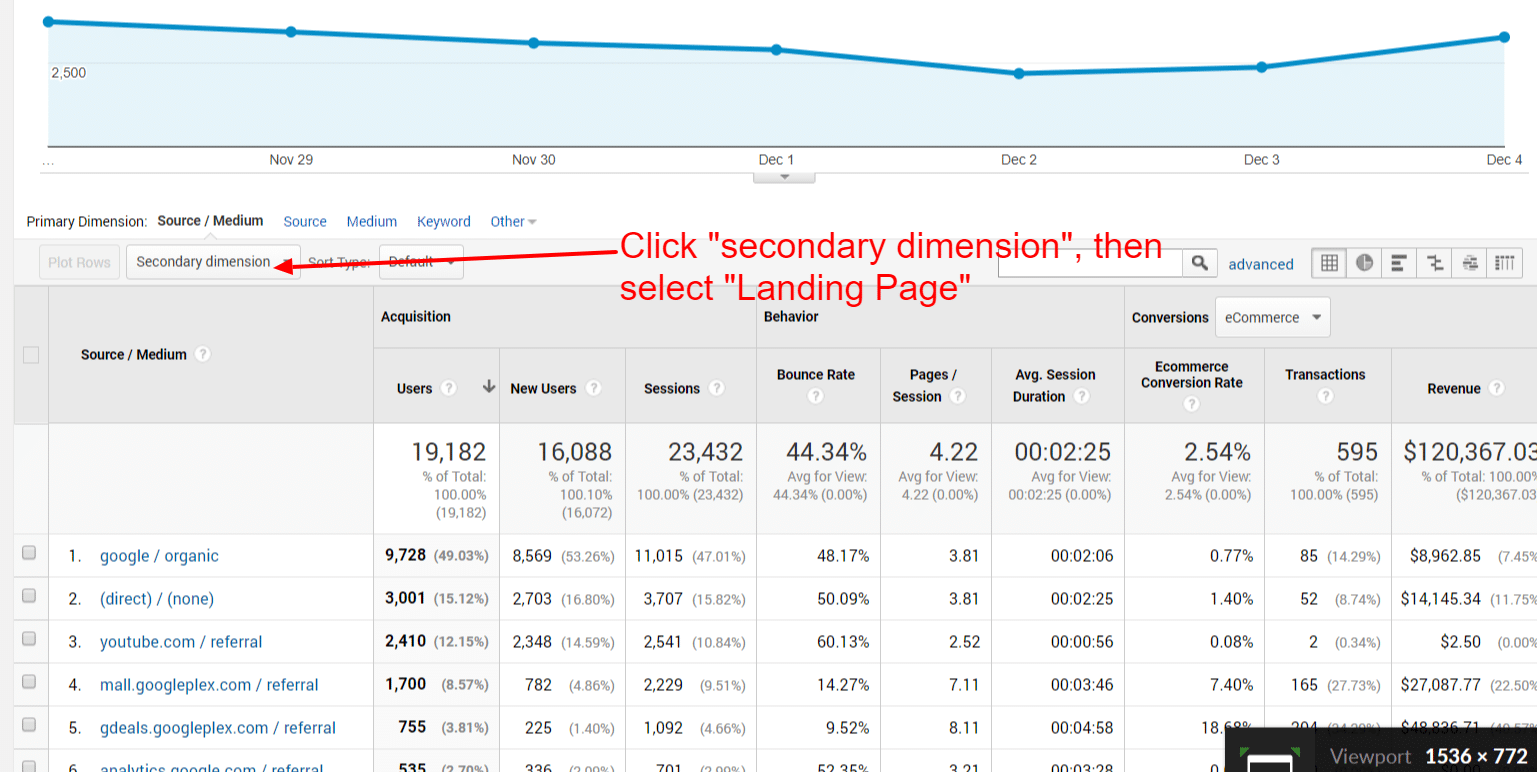Enhance Your Data Analysis with Secondary Dimension in Google Analytics
Enhance Your Data Analysis with Secondary Dimension in Google Analytics
Blog Article
Gain Thorough Viewpoints With Secondary Dimension in Google Analytics
Additional dimensions in Google Analytics act as a powerful device for improving the deepness of insights derived from information analysis. By integrating second measurements right into your reports, you open a globe of opportunities for discovering detailed connections and nuanced patterns within your web site's performance metrics. This added layer of information can brighten covert fads and give a more granular understanding of customer habits. With the capability to segment and contrast data throughout numerous measurements, the potential for acquiring workable insights is huge. Keep tuned to discover how secondary dimensions can transform your information analysis and drive educated decision-making in the digital realm.
Understanding Additional Measurements in GA
Additional dimensions allow users to dive deeper right into their information by including an added layer of details to the primary information being evaluated. By incorporating second measurements, individuals can segment and compare data across various dimensions, such as traffic sources, individual tools, geographic areas, and more.
Comprehending just how to efficiently utilize secondary measurements in Google Analytics is important for removing important understandings from the data gathered. By picking the suitable second dimensions to match primary metrics, individuals can reveal patterns, trends, and connections that may have or else gone unnoticed. This deeper level of evaluation can result in more enlightened decision-making and the optimization of digital advertising and marketing approaches to improve general performance.
Benefits of Making Use Of Secondary Measurements
Checking out the benefits integral in leveraging second dimensions within Google Analytics brightens the depth of insights offered for improving data analysis. By including second dimensions, users can obtain an extra thorough understanding of their primary information metrics. Among the key advantages is the capacity to segment and filter information, enabling a much more detailed analysis of certain dimensions such as traffic resources, customer behavior, or geographical area - Secondary Dimension in Google Analytics. This division aids in identifying patterns, trends, and relationships that might not appear when looking at the information in isolation.
Moreover, additional measurements enable individuals to contrast and contrast different information points within the very same report, providing an extra holistic sight of internet site performance. This comparative analysis can clarify the effectiveness of marketing campaigns, content engagement, or customer demographics. In addition, using additional dimensions can assist in identifying outliers or abnormalities that might require additional examination.
Essentially, leveraging additional dimensions in Google Analytics supplies an effective device for drawing out important insights and optimizing data-driven decision-making procedures.
Applying Additional Dimensions Successfully
To effectively execute second measurements in Google Analytics, strategizing the option and application of these added information layers is paramount for making the most of the depth of understandings stemmed from analytics reports. When choosing second dimensions, think about the specific objectives of your analysis to ensure the picked measurements align with the information needed to respond to relevant inquiries. It's important to focus on relevance over quantity, choosing measurements that match the main measurement and offer significant context.
Moreover, understanding the relationship between the main and best site secondary measurements is important. This comprehension allows you to analyze the information precisely and attract actionable verdicts. Carrying out secondary measurements efficiently includes utilizing them to discover patterns, trends, and correlations that might not appear when examining data exclusively based upon the key measurement. By including secondary dimensions thoughtfully, you can improve the granularity of your analysis and gain much deeper insights right into customer actions, material performance, and various other crucial metrics within Google Analytics.
Analyzing Data With Second Dimensions
Using secondary dimensions in information analysis provides a nuanced point of view that discovers elaborate connections and patterns within Google Analytics reports. By integrating second dimensions together with primary dimensions, experts can dive much deeper into the data to draw out useful insights. When evaluating data only based on primary dimensions., this strategy makes it possible for the recognition of connections that may not be right away evident.
When assessing information with second dimensions in Google Analytics, it is vital to think about the certain metrics or dimensions that will give the most purposeful context for the main measurement being evaluated. As an example, coupling the main dimension of 'traffic resource' with second dimensions such as 'gadget group' or 'touchdown page' can supply a much more additional info detailed understanding of individual actions and choices.
Furthermore, the ability to sector data using secondary measurements permits for a more granular evaluation of customer communications, aiding in the optimization of marketing approaches, web site efficiency, and overall customer experience. By leveraging second measurements properly, services can make informed decisions based upon an extensive analysis of their Google Analytics data.
Ideal Practices for Additional Dimensions
When carrying out second dimensions in Google Analytics, accuracy in picking relevant metrics is vital for deriving workable understandings from the data evaluation process. One of the most effective techniques for using additional dimensions efficiently is to align them with your primary dimension to gain a much more thorough understanding of your site or project efficiency. If your primary measurement is 'Source/Medium,' pairing it with second dimensions like 'Tool Classification' or 'Landing Web page' can offer understandings into just how different tools or landing web pages impact website traffic from different resources.

Regularly try out various mixes of second and primary dimensions can help you discover brand-new relationships and patterns within your data, enabling you to maximize your methods and improve overall performance (Secondary Dimension in Google Analytics). By following these finest methods, you can take advantage of additional dimensions in Google Analytics properly to obtain much deeper understandings and make data-driven choices that favorably influence your organization

Final Thought
In verdict, secondary dimensions in Google Analytics offer a beneficial possibility to gain deeper insights into primary data metrics. By adding an additional measurement to records, businesses can discover correlations, patterns, and patterns that might not be instantly noticeable, causing a much more thorough understanding of user actions and communications on a try this website website. Carrying out secondary measurements efficiently and examining information with them can aid businesses make data-driven decisions and optimize their online performance.
By incorporating additional measurements, customers can sector and contrast information across different dimensions, such as traffic resources, customer tools, geographical locations, and a lot more. Implementing additional dimensions successfully entails using them to reveal patterns, fads, and correlations that might not be apparent when evaluating data entirely based on the primary dimension. By integrating additional dimensions alongside primary dimensions, experts can dig deeper right into the information to draw out beneficial understandings. One of the finest methods for using secondary measurements efficiently is to straighten them with your primary measurement to acquire an extra detailed understanding of your site or project performance. If your key dimension is 'Source/Medium,' coupling it with additional measurements like 'Device Group' or 'Landing Web page' can supply insights right into how different tools or landing web pages effect website traffic from different sources.
Report this page